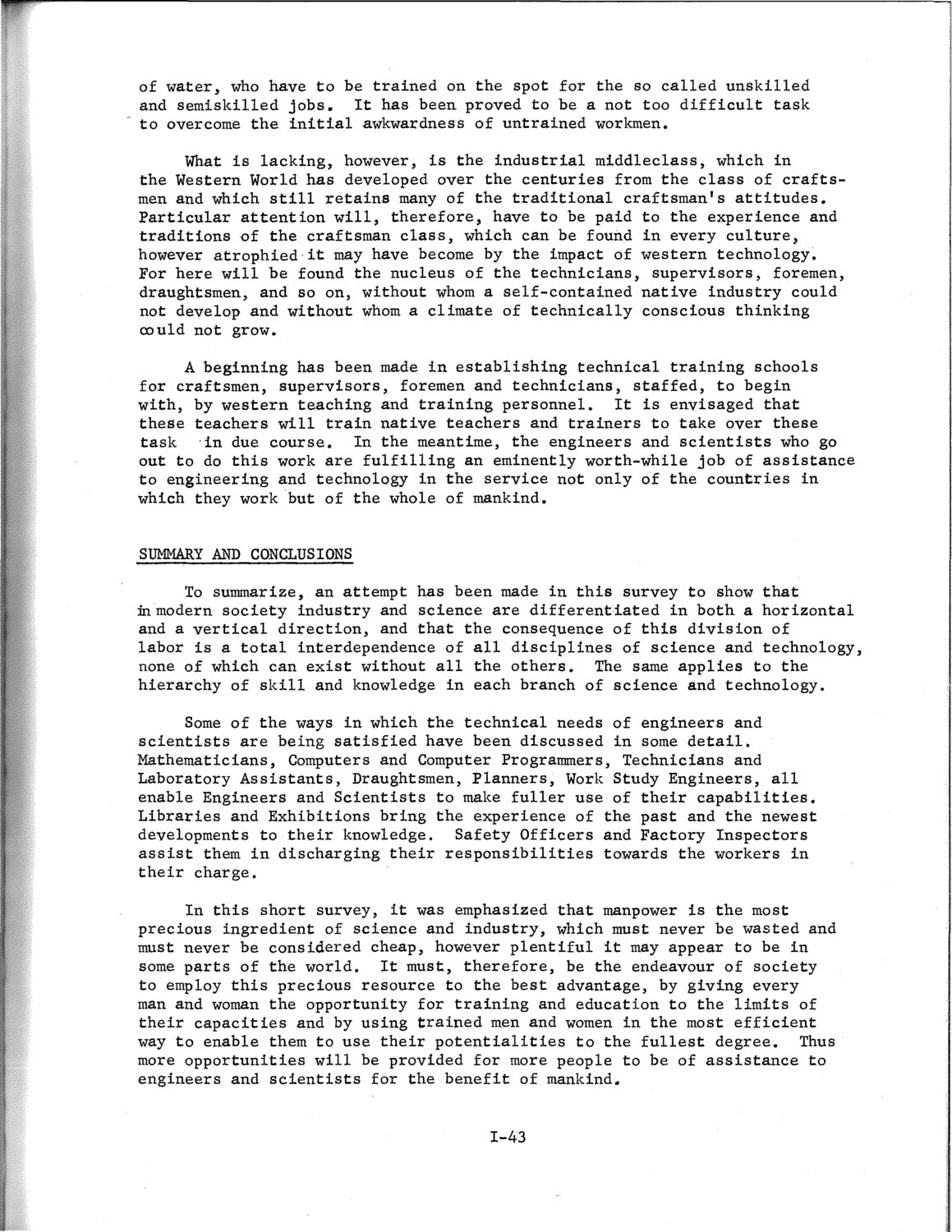| |
| |
Caption: SWE - Proceedings of the First International Conference of Women Engineers and Scientists
This is a reduced-resolution page image for fast online browsing.

EXTRACTED TEXT FROM PAGE:
of water, who have to be trained on the spot for the so called unskilled and semiskilled jobs. It has been proved to be a not too difficult task to overcome the initial awkwardness of untrained workmen. What is lacking, however, is the industrial middleclass, which in the Western World has developed over the centuries from the class of craftsmen and which still retains many of the traditional craftsman's attitudes. Particular attention will, therefore, have to be paid to the experience and traditions of the craftsman class, which can be found in every culture, however atrophied it may have become by the impact of western technology. For here will be found the nucleus of the technicians, supervisors, foremen, draughtsmen, and so on, without whom a self-contained native industry could not develop and without whom a climate of technically conscious thinking could not grow. A beginning has been made in establishing technical training schools for craftsmen, supervisors, foremen and technicians, staffed, to begin with, by western teaching and training personnel. It is envisaged that these teachers will train native teachers and trainers to take over these task in due course. In the meantime, the engineers and scientists who go out to do this work are fulfilling an eminently worth-while job of assistance to engineering and technology in the service not only of the countries in which they work but of the whole of mankind. SUMMARY AND CONCLUSIONS To summarize, an attempt has been made in this survey to show that in modern society industry and science are differentiated in both a horizontal and a vertical direction, and that the consequence of this division of labor is a total interdependence of all disciplines of science and technology, none of which can exist without all the others. The same applies to the hierarchy of skill and knowledge in each branch of science and technology. Some of the ways in which the technical needs of engineers and scientists are being satisfied have been discussed in some detail. Mathematicians, Computers and Computer Programmers, Technicians and Laboratory Assistants, Draughtsmen, Planners, Work Study Engineers, all enable Engineers and Scientists to make fuller use of their capabilities. Libraries and Exhibitions bring the experience of the past and the newest developments to their knowledge. Safety Officers and Factory Inspectors assist them in discharging their responsibilities towards the workers in their charge. In this short survey, it was emphasized that manpower is the most precious ingredient of science and industry, which must never be wasted and must never be considered cheap, however plentiful it may appear to be in some parts of the world. It must, therefore, be the endeavour of society to employ this precious resource to the best advantage, by giving every man and woman the opportunity for training and education to the limits of their capacities and by using trained men and women in the most efficient way to enable them to use their potentialities to the fullest degree. Thus more opportunities will be provided for more people to be of assistance to engineers and scientists for the benefit of mankind. 1-43
| |